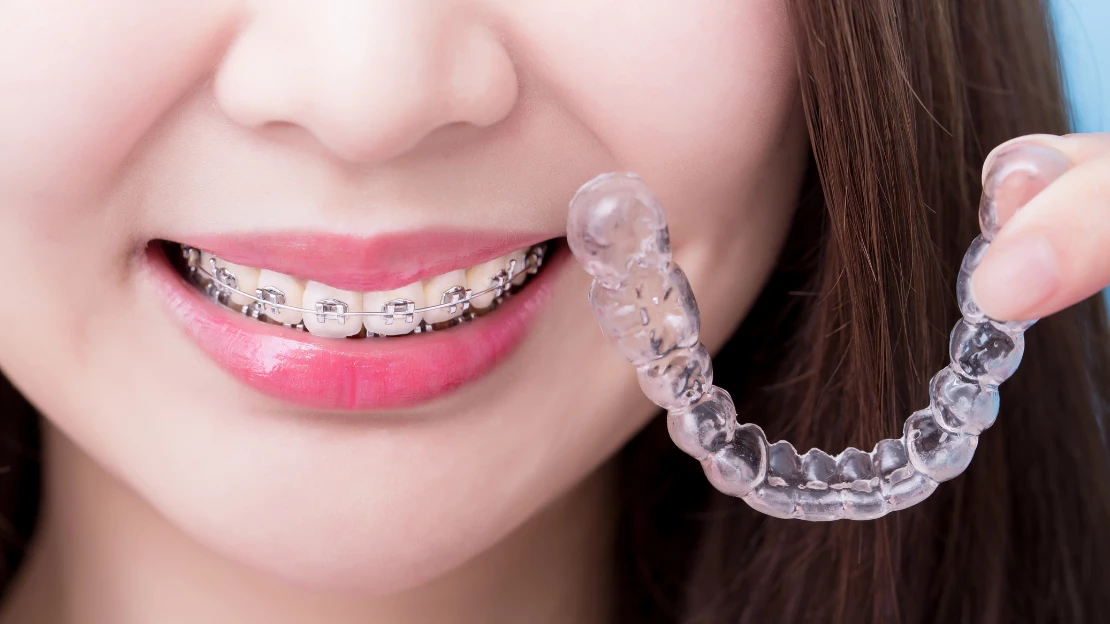The 4-Minute Rule for Legacy Orthodontics
Wiki Article
How Legacy Orthodontics can Save You Time, Stress, and Money.
Table of ContentsNot known Details About Legacy Orthodontics Some Of Legacy OrthodonticsGetting My Legacy Orthodontics To WorkExcitement About Legacy Orthodontics7 Simple Techniques For Legacy Orthodontics
In addition, we use flexible treatment timetables, versatile settlement alternatives and an enjoyable, pleasurable experience.An orthodontist is a dentist trained to detect, prevent, and deal with teeth and jaw irregularities. Orthodontists work with people of all ages, from children to adults.
Malocclusion, or misaligned teeth, can bring about dental problems, consisting of tooth decay, periodontal illness, and difficult or painful chewing. Not everyone is birthed with straight teeth. If you have a poor bite or huge areas between your teeth, you may intend to seek advice from a dental practitioner specializing in orthodontic treatment.
Legacy Orthodontics Fundamentals Explained
( Image Credit: DigitalVision/Getty Images) Orthodontists utilize repaired and detachable oral gadgets, like dental braces, retainers, and bands, to transform the position of teeth in your mouth. Orthodontic treatment is for oral problems, including: Uneven teethBite issues, like an overbite or an underbiteCrowded teeth or teeth that are as well far apartJaw misalignmentThe goal of orthodontic therapy is to improve your bite.A healthy and balanced bite guarantees you can consume, chew, and speak correctly. While you could think about orthodontists as mainly for children or teens that require braces, they can deal with dental troubles at any age. Orthodontists attend university, dental institution, and orthodontic institution. After college graduation, they invest 2 or 3 years in an orthodontic residency program.
, however not all dental practitioners are orthodontists. They concentrate on two areas: Exactly how to effectively and safely relocate teeth How to appropriately direct advancement in the teeth, jaw, and faceOnce an orthodontist has finished training, they have the option to become board accredited.
Legacy Orthodontics for Beginners
Imbalance, or malocclusion, is one of the most common reason individuals see an orthodontist. It is hereditary and is the outcome of size differences between the top and lower jaw or between the jaw and teeth. Malocclusion leads to tooth overcrowding, an irregular jaw, or uneven bite patterns. Malocclusion is generally treated with: Your orthodontist connects metal, ceramic, or plastic square bonds to your teeth.If you have just minor malocclusion, you may be able to make use of clear dental braces, called aligners, rather than conventional braces (https://allmyfaves.com/legacyortho?tab=Legacy%20Orthodontics). Some individuals require a headwear to help move teeth right into line with stress from outside the mouth. After dental braces or aligners, you'll require to use a retainer. A retainer is a customized device that maintains your teeth in position.
They're frequently made use of on youngsters. They official site can develop additional space in the mouth without having to pull teeth. If you have a major underbite or overbite, you could need orthognathic surgical procedure (likewise called orthodontic surgical procedure) to lengthen or shorten your jaw. Orthodontists utilize wires, medical screws, or plates to sustain your jaw bone.
You might require to see an orthodontist if you have: Crowding or otherwise sufficient room for all of your teethOverbite, when your top teeth come your base teethUnderbite, when your bottom teeth are also far forwardSpacing or problems with gapsCrossbite, which is when your upper teeth fit behind your bottom teeth when your mouth is closedOpen bite or an upright space between your front bottom and top teethMisplaced midline, when the center of your bottom and top teeth do not line up Remedying a dental malocclusion can: Make attacking, chewing, and talking easierImprove the symmetry of our face and your total appearanceEase discomfort from temporomandibular joint problemsSeparate your teeth and make them less complicated to clean up, helping prevent dental cavity or dental caries It's typically a dental practitioner that first notices misaligned teeth during a regular test.
The 7-Minute Rule for Legacy Orthodontics

Throughout your initial orthodontic assessment, you'll likely have: An oral examPhotos taken of your face and smileDental X-raysPanoramic (360 degree) X-rays of your face and headImpressions to develop molds of your teethThese tests will certainly aid your orthodontist understand exactly how to wage your therapy. orthodontics. An orthodontist is a dental expert who's had training to treat your teeth and jaw
Orthodontists might perform surgery, exams,X-rays,and more to aid you attain an extra comfy, healthier smile. An orthodontist is focused on your bite, so something like a cracked tooth would certainly be handled by a dental professional. Orthodontists are dental practitioners yet not all dental practitioners are orthodontists. Orthodontists are focused on your bite, or the way your teeth meshed, and the straightness of your teeth. Ever before questioned exactly how celebrities constantly appear to have perfectly aligned teeth? The solution often lies in the knowledgeable hands of an orthodontist. But what specifically does an orthodontist do? Orthodontists are dental professionals that focus on fixing abnormalities in the teeth and jaws. Their proficiency exceeds just producing an attractive smile; it includes enhancing your general dental health and feature.
An Unbiased View of Legacy Orthodontics

, orthodontists have a varied toolkit at their disposal. These tried-and-true braces use a system of brackets bound to the teeth and attached by wires.
Clear aligners, like Invisalign, are a popular option for people seeking a more very discreet therapy alternative. These removable trays are custom-made to gradually move the teeth's placement. Headgear might be utilized along with braces or aligners to use extra targeted forces, particularly for correcting jaw inconsistencies. In situations of narrow jaws, palatal expanders can be used to develop area for proper tooth placement.
Report this wiki page